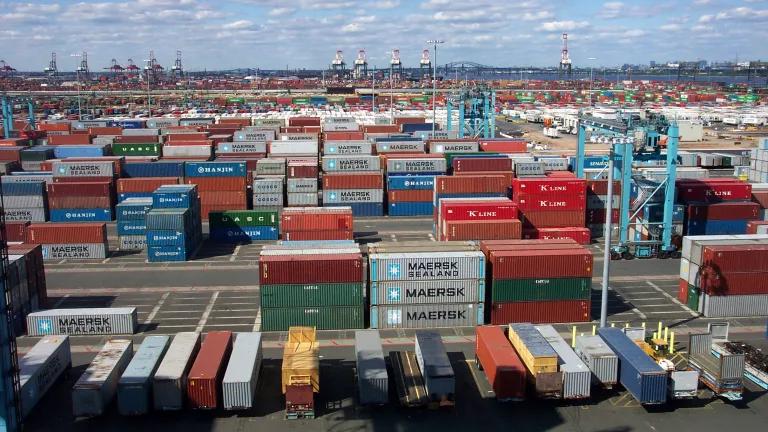Another creative funding idea that’s getting some attention lately is a national infrastructure bank, an independent entity that would use government funding to attract major private investment in public infrastructure projects. NYU professor Michael Likosky recently convened a meeting between Treasury officials, bankers, pension funds and hedge fund managers to discuss how such a bank might work. It’s the first time this diverse group has ever shared their opinions with the government on this idea – and apparently some of them are bullish on it.
Infrastructure banks in other parts of the world have proven to be largely successful in leveraging public money. The European Investment Bank (EIB), owned and funded by the European Union, finances investments worth $470 billion using only about $50 billion in government funds. That’s a ratio of more than 9:1 in private versus public funding. The bank, which has funded huge projects like the Port of Barcelona and the TGV rail system that connects France and Spain, consistently turns a profit and has had only negligible delinquencies over the past five decades, according to economists Robert Skidelsky and Felix Martin, writing in the New York Review of Books.
Likosky, an expert on public-private partnerships and author of Obama’s Bank: Financing a Durable New Deal, has a fairly expansive vision of how a national infrastructure bank would operate – he’s talking about something on the level of the EIB that could finance investments on the order of $500 billion. Even Fareed Zakaria recently wrote about the need for a national infrastructure bank.
The problem is that in our current political climate, talk of using public funds to create a government bank is a total turn-off to many Republicans. No matter how great its potential benefits, a large, national infrastructure bank is exceedingly unlikely to pass muster with this Congress.
However, the concept of an infrastructure bank in and of itself shouldn’t scare anyone off, since the size of the bank can be scaled down and still have tremendous benefits. A scaled-down infrastructure bank, devoted solely to transportation, could be more palatable to the reduced fiscal appetites of today’s Congress.
President Obama recently proposed exactly this in his new 2011 budget. His National Infrastructure Innovation and Finance Fund (notice the absence of the word “bank”) would be housed under the Department of Transportation, and oversee $4 billion in funds over the next two years.
This is significantly smaller than the infrastructure bank he proposed last year, which was intended to be funded at $5 billion per year for five years. Yet even at this smaller scale, the bank can still be effective at leveraging public money to attract private investors for critical infrastructure projects.
An infrastructure bank for transportation would make merit-based loans for infrastructure improvements, using public funds to attract investment from the private sector. A merit-based system would make more efficient use of funds than the current, earmark-heavy funding that dominates the federal transportation program.
Through the bank, federal, state and local governments could work together with the private sector to fix crumbling roads and bridges, and create a 21st century transportation system.
Likosky envisions the role of the government in public-private partnerships as that of a “player-coach,” not dictating the rules from the sidelines (and thus being a thorn in the side of potential private investors) but being involved in the game itself. The biggest challenges, which they’ve seemed to manage pretty well over in Europe, are ensuring that the public gets a reasonable return for their investment in the end, and that non-monetary objectives rooted in the public good, such as increased accessibility and employment, or greenhouse gas reductions, are specified and required.
America’s infrastructure ranking has dropped from 6th to 23rd in the past decade, and continues to drop, according to the World Economic Forum. We need to invest in our roads, rails and bridges if we want to remain economically competitive. And with the federal budget under such pressure, it’s becoming increasingly apparent that we need a lot of private capital to do it. A scaled-down infrastructure bank might not be able to generate the trillions of dollars we need to upgrade our entire transportation network, but it will make good use of our limited public funds to vastly improve the status quo.


